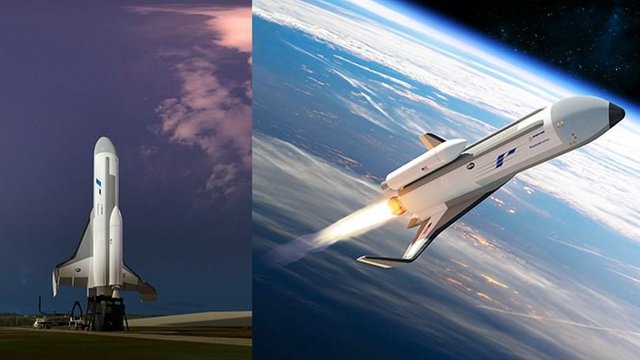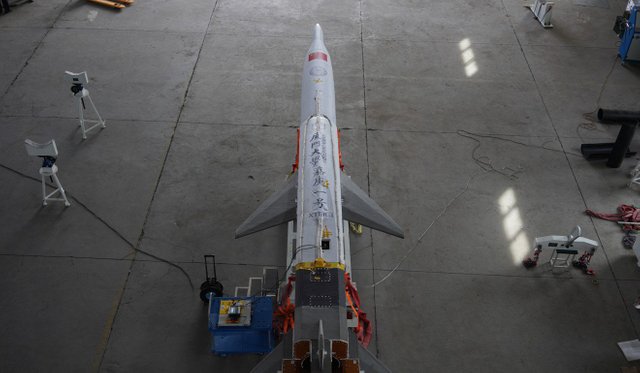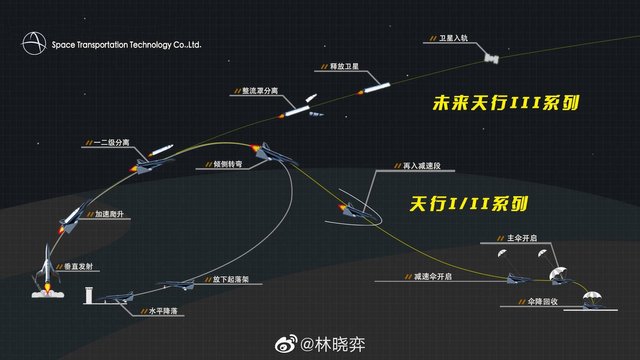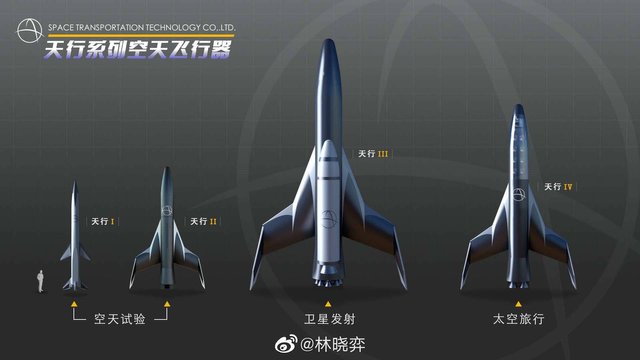Meet the Jiageng-1: China's Demonstrator for its Equivalent of the DARPA XS-1
SpaceX and Blue Origin are exploiting and/or exploring the reusable aspects of rocketry for access to space. They have been reusing the same first stage rockets for either placing satellites in orbit (SpaceX) or for preparation to do so (Blue Origin). Both of them have a shared, singular problem though: their fastest turn around for any launch from purchase to flight is measured in months. There are scenarios when being able to fly immediately - within days, if not hours - is actually really critical. SpaceX with their Falcon9 and Blue Origin with their New Shepard and future New Glenn rockets will not be able to address
Most of those scenarios are national security related. The US, for example, has become very dependent on satellites for both its military and economy. Other nations, like China, Russia and most recently India, have been developing antisatellite weapons. The idea is to be able to snap replace the satellites as needed in days rather than months.

(American XS-1 paid for by DARPA being built by Boeing)
In America, DARPA has been working with Boeing on the XS-1. This is supposedly going to fly in the next year or so demonstrating multiple launches in very short order. However, whatever the American technological prowess may be, the laws of physics don't care what color your flag is.
And the Chinese realize this.
(a very edited version of the launch of the technology demonstrator . Unfortunately, no really good videos are on youtube yet for Jiageng-1)
They have begun development of their own equivalent of the XS-1. They are, however, taking smaller steps than the Americans. This is probably wise, since it allows for the incremental testing of components. The first testbed is called the Jiageng-1 and the Chinese successfully launched her.
Jiageng-1 is 8.7m long and has a wing span of 2.5m. She launched vertically and attained a speed of Mach 3.5. That is as fast as the old SR-71 spy plane the USAF used to fly. To improve her flight capability at hypersonic speeds, she is what is called a waverider. This allows the aircraft to use the shockwaves from flying faster than the speed of sound to increase its aerodynamic lift. Jiageng-1 is also supposed to demonstrate recovery capabilities as well.
The goal is to build the two stage to orbit launchers. There are apparently plans to have multiple versions, small and large, for slightly different roles. The first stages would fly back. The seconds will not. In the American XS-1, the first stage will land on a run way. In at least some versions, the first stage will land via parachute. Perhaps it is to save money and weight on the cost of the landing gear and reduce complexity.
All of this is very exciting. There actually seems in the last decade toe be real development and a significant push in space to new technologies and capabilities. While Americans especially pushing forward, the Chinese are coming up quick and America had best not be complacent.


